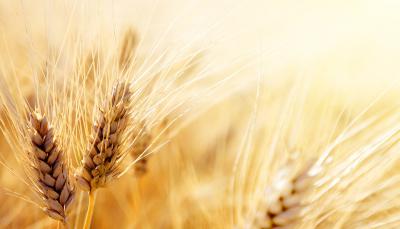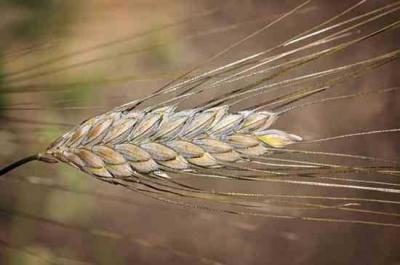
A long time ago, in the section on recommended reading in Michio Kushi's The Book of Macrobiotics, I found an intriguing title The Twelfth Planet by Zecharia Sitchin. “How does it relate to macrobiotics?” I thought and read it out of curiosity. In this book, the author posited the existence of superior, god-like beings called the Anunnaki, who came to Earth eons ago from another part of solar system and helped humans to evolve.
After reading all of Sitchen’s well-researched books, my interest in our origins grew steadily. However, in his fascinating book Forgotten Worlds, Michio explained that while some of our ancient ancestors may have come from outer space, they did not necessarily build huge structures or develop agriculture and now forgotten technology.
Human history unfolds in a spirallic, logarithmic pattern accordingly to the order of the universe. Beside well known daily and yearly cycles, the less understood precessional cycle of greatly influences human development. As our planet rotates and wobbles, its axis circumscribes a big circle in the sky. The subtle electromagnetic energy flowing from passing constellations animates life and has a profound effect on consciousness. This approximately 25,800-year cycle creates periods of abundance and scarcity, golden and dark ages, paradise and exile.
About 13,000 to 12,000 years ago, the dark half of the precessional cycle coincided with global destruction brought on by a partial earth axis shift or with the impact of a giant comet. It brought major climate change, floods, and human migrations. The surviving groups of technically and culturally advanced people settled in remote parts of the world, established colonies, and developed agriculture.
One such place was the region of the Middle East called the Fertile Crescent, stretching from the western shore of the Mediterranean and extending to the Persian Gulf, spanning the modern states of Israel, Lebanon, Syria, Jordan, Iraq, parts of Turkey, Iran, and Egypt.
I was reading The Genius of the Few by Christian and Barbara Joy O'Brien when an opportunity came to take a trip to Lebanon. Here, in the western part of the Fertile Crescent, in the area where Lebanon, Israel, and Syria adjoin, the authors placed historical paradise. Traditionally, religious scholars located paradise in Mesopotamia (modern Iraq) or in heaven, but the O'Briens came to their conclusion after careful translation of old Sumerian and Hebraic writings.

After some generations, those highland lords of cultivation shared their achievements with the local people. The biblical Hebrews carried those memories of the garden in Eden. In ancient Semitic languages, the word El meant “shinning” or “brightness,” so the leaders of the Shinning Ones later were named in their language Elohim and were worshipped as God. Interestingly, in Rachayah Basin (note Achaya, an ancient Greek name), there is a village that still bears the name Edhin.
After arriving in Beirut, I travelled to Byblos, admiring along the way a continuous band of towns on steep mountainous slopes and the rugged Mediterranean coastline on the other side of the road. In Byblos—one of the oldest uninterruptedly inhabited cities dating to 5000 BC, where alphabet and money were probably invented—I stayed in a hotel for a time. Friendly Syrian refugees and Kurdish and Philippine immigrants cooked for me oatmeal, millet (my own), vegetables, and great soups. I was able to buy whole wheat rolls and hummus, and along the way delicious falafel with pickled radishes could always be found.

In Ba'albek, the spectacular Roman remains of temples to Jupiter, Bacchus, and Venus were built on earlier Canaanite and Phoenician structures. Those, in turn, were built on much older foundations. The architectural complex includes the largest blocks ever used for any purpose. To this day, scientists cannot explain how such huge trilithons (more than 800 tons) were handled.
So, who were the builders, the people remembered as Sun Gods, Lords, and the Shinning Ones, the Elohim? Where did they come from? Such thoughts occupied me as I made my way to the famous, once abundant cedar forests, now a small reserve. Here, in a mountainous area, to my delight, I found wild wheat and barley growing in the forest clearing. Those ancient growing-wild grains can also be found in other parts of the Fertile Crescent, usually in proximity to old civilizational centers. It is clear that grains and civilization, human development and ancient wisdom, went together. In many cultures, grains were considered as a gift of God. The term cereal comes from Ceres, Roman goddess of crops. In Polish and some Slavic languages, the term grain (zboze) comes from the name Bog (God), which is etymologically connected to Bhaga, one of ancient, Vedic solar deities.
The first domesticated wild wheat was awned einkorn (from the German “single grain”). Early humans may have started gathering einkorn about 30,000 years ago in Syria, but the oldest evidence of that domesticated grain, dating to 10,600 BC, was found in southeastern Turkey, near biblical Harran (modern Sanliurfa), and the recently discovered mysterious site of Gobekli Tepe. From about 8000 to 7000 BC, cultivation of einkorn spread from the Fertile Crescent throughout Asia Minor to Europe but declined about 2000 BC in favor of emmer, another type of domesticated wild wheat (see below). Nowadays only a few farmers grow einkorn, as the yield is about four times less than of modern wheat.
Einkorn is unique among other types of wheat. Pure, never hybridized, and delicate, it grew wild for millions of years before being cultivated. Its grains are small, higher in protein, B and A vitamins. It contains 7% easy-to-digest gluten and less starch. The dough is stickier than ordinary wheat. The flour has a yellowish color, owing to more carotenoids and lutein. Einkorn is an excellent choice for strengthening vision and minimizing eye problems.

Emmer is a predecessor of spelt and durum wheat. Like spelt, it doesn't require pesticides, herbicides, and artificial fertilization. Smaller, darker grains and a harder husk differentiate emmer from other types of wheat. The dough is delicate (and not very sticky), nutty-flavored, and honey-scented. Like other grains, it is a rich source of complex carbohydrates, proteins, and fiber. It contains three times more vitamin A and five times more B2 than other grains. Basically, emmer is lower in gluten and higher in micronutrients and antioxidants. The gluten in emmer has a different type of structure than modern wheat and only in rare cases causes gluten intolerance.
Einkorn and emmer are usually made into pastas, but can also be used in breads, porridges, grain salads, and cooked with brown rice. In Eastern Europe, one of the traditional quick courses enjoyed by peasants was homemade small pieces of wheat pasta mixed with farmers’ cheese and fried onions. Here is a healthier version of that dish and one that harmonizes well with sp
PASTA WITH MARINATED TOFU
1 cup of cooked emmer, einkorn, or other old wheat pasta
1/4 piece of tofu cake, crumbled, mixed with 1 heaping ts of barley miso and
1 teaspoon green nori flakes, marinated for a few hours
1/2 chopped small onions
1/4 teaspoon caraway seeds
1/4 to 1/2 cup of water
parsley or sprouts for garnish
Fry onions for a few minutes, add water, marinated tofu, and caraway seeds, and cook until the water evaporate. Then mix in the pasta, sprinkle with garnish, and enjoy the meal.
You may also experiment with traditional Eastern European holiday pasta with poppy seeds usually eaten at Christmastime. It is dessert-like dish.
HOLIDAY PASTA WITH POPPY SEEDS
1. Soak 1/4 cup of poppy seeds overnight and dry roast in a pan, stirring constantly, and ground in a grinder
2. Soak 3-4 dried unsulfured apricots soaked in about in 1/2 cup of water for about 1 hour, cut in small pieces, and cook in soaking water with a pinch of salt till half of the liquid evaporates
3. Roast several walnuts and crush in a suribachi or mortar
4. Combine ingredients, adding 1 tablespoon of rice syrup, and cook for a minute.
5. Mix with emmer, einkorn, or other wheat pasta cooked with a pinch of salt (if not added), according to instruction on the package.
Danuta Nguyen, taught special education for many years in New York. She graduated from the Kushi Institute and uses every opportunity to study macrobiotics. She now lives in Cracov, Poland, where she pursues her interest in ancient history, cultural anthropology, food, and consciousness.The article originally appeared in Amberwaves, published by http://www.planetaryhealth.com
